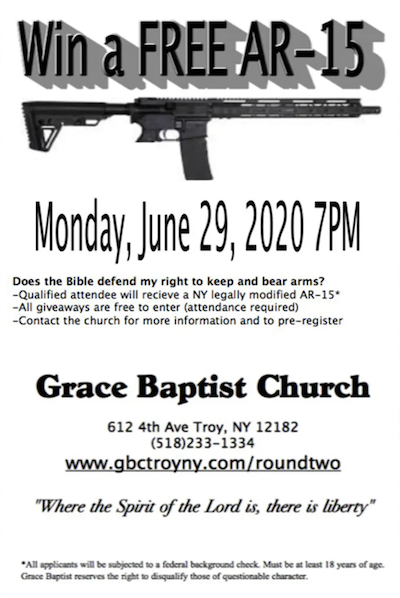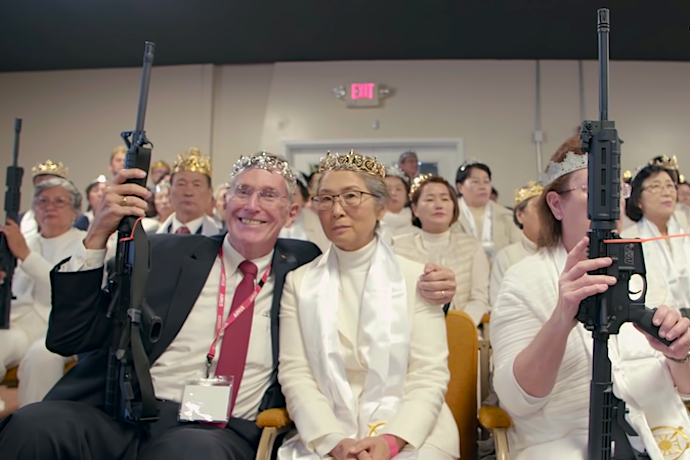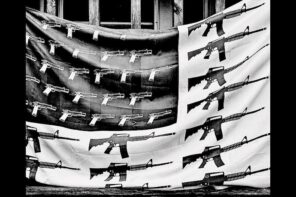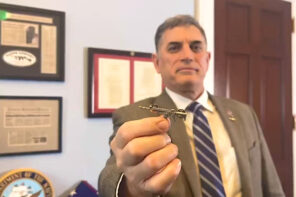For the second time in almost as many weeks, a mass shooter used an AR-15-style rifle to kill innocent Americans. On May 14, PG allegedly used a variation of the AR-15 to shoot 13 people, 10 of them fatally. Just 10 days later, SR carried an AR-15 and a handgun into Robb Elementary school in Uvalde, Texas, where he allegedly shot and killed 21 people and wounded over a dozen others.
Though most firearm-related deaths in the United States involve handguns, people—nearly always men—who commit mass shootings (defined by the Congressional Research Service as involving four or more victims) increasingly prefer AR-15-style firearms, including the shooters who killed 58 people in the 2017 Las Vegas shooting, who killed 26 people in the 2012 shooting at Sandy Hook Elementary School, and who killed 26 people in the 2017 shooting at First Baptist Church in Texas.
AR-15s aren’t just popular rifles for people who commit mass shootings, however. The National Shooting Sports Foundation estimates that AR-15-style rifles account for one out of every five firearm sales in the nation and Americans own an estimated 15 million AR-15-style rifles. The rifle is so popular among firearm enthusiasts that the National Rifle Association nicknamed it America’s Rifle.

Tattoo of Jesus and AR-15. Image: David Watts
AR-15s are also increasingly the firearm of choice for Christian gun owners who arm themselves—in their minds, at least—in defense against both tyranny and evil. Their admiration for the AR-15 is the result of the convergence of several parallel and related movements, the first of which is simply the rise of American gun enthusiasts who embrace the AR-15 as their preferred firearm.
The ArmaLite company created the AR-15 in the 1950s with the intention of selling it to the U.S. military. They soon sold the design to another company, however, who sold versions of the weapon to the military, police departments, and the general public. The AR-15 immediately proved popular to U.S. gun enthusiasts who admired it—and continue to do so—for its comparably low price, for its customizability, for its aesthetics (“it just looks cool,” one collector told me), and for its overall usability.
Today, the term “AR-15” refers to various rifles and pistols based on the original design that multiple companies manufacture and market—Pepsi versions of the Coca-Cola original. Journalist Jon Schuppe summarized the AR-15’s unique place in America’s gun culture when he wrote, “the AR-15 remains a jewel of the gun industry, the country’s most popular rifle, irreversibly lodged into American culture.”
As gun enthusiasts increasingly embraced the AR-15, the Christian Right emerged as a sociocultural, economic, and politically active force in the U.S. Members of the Christian Right tend to believe that the United States shares a special relationship with God and that current political and sociocultural trends threaten this relationship. They increasingly agree that a violent upheaval will be necessary to reset this relationship and that God will sanction this violence.
Reverend Karl Jones from the Fellowship Church of God in Cleveland, Ohio, summarized this militant God when he said, “Some people say, well, ‘God is only a god of love,’ [but] no, God was a god of war. God is a god of vengeance. Very few people like to talk about God in his totality. God took judgment, several times…[T]he god that I serve was a god of wrath, vengeance, protection; watching out for his own.” This god demands justice and is willing to use violence to achieve His ends.
For people like Rev. Jones, the same God who sanctioned mass killings in the Hebrew Scriptures is the same God who destroyed Sodom and Gomorrah; who came to Earth in the form of Jesus and who (according to Matthew 10:34) came not to “bring peace, but a sword;” who will return as Jesus with a robe dipped in his enemy’s blood (Revelation 19:13); and who will violently eradicate evil on Earth in a final apocalyptic battle. The Bible and even Jesus’s teachings provide a template for restorations predicated on violence. 
As the Christian Right developed a military mindset, “America’s Rifle” emerged as their preferred firearm, making the AR-15 a common fixture on the Christian Right. Rev. Sean Moon instructed his congregants to bring the AR-15 to a blessing ceremony at his church; preachers and pastors extol the virtues of the AR-15; Retired Lieutenant General Jerry Boykin told a room of evangelical activists that when Jesus returns, he’ll be armed with an AR-15 as the Biblical “rod of iron”; and several churches have raffled AR-15s both to raise money and to encourage attendance. Events like raffles and blessing ceremonies highlight a larger and growing movement of people arming themselves with AR-15s (among other firearms) in defense of Christian America.
While many Americans embrace and even celebrate the AR-15, proponents of gun control increasingly view the AR as paradigmatic of everything wrong with American gun laws. Their animosity toward the AR-15 is evident on social media, where one need only search #BanAR15 to see some of the memes and signs people have created to protest it. In these images, critics repeatedly link the AR-15 to the rise in mass shootings, to the murder of children and people of color (African Americans in particular), to the nation’s relaxed gun laws, and to what they perceive as political overall apathy unwilling to address gun-related violence.
The collective interest in the AR-15 suggests that “America’s Rifle” will continue to occupy a unique place in American culture. For people who use AR-15s in horrific crimes, it perhaps symbolizes ultimate power capable of taking life. For people who criticize what they deem America’s obsession with firearms, the AR-15 symbolizes everything wrong with said obsession.
For many Christians, however, the AR-15 is God’s preferred firearm, best wielded by God-fearing Christians ready to enforce God’s laws on Earth. The collective interest in the AR-15 suggests that, for better or worse, it is indeed “America’s Rifle,” a controversial firearm lying at the intersection of American politics, culture, and religion.





